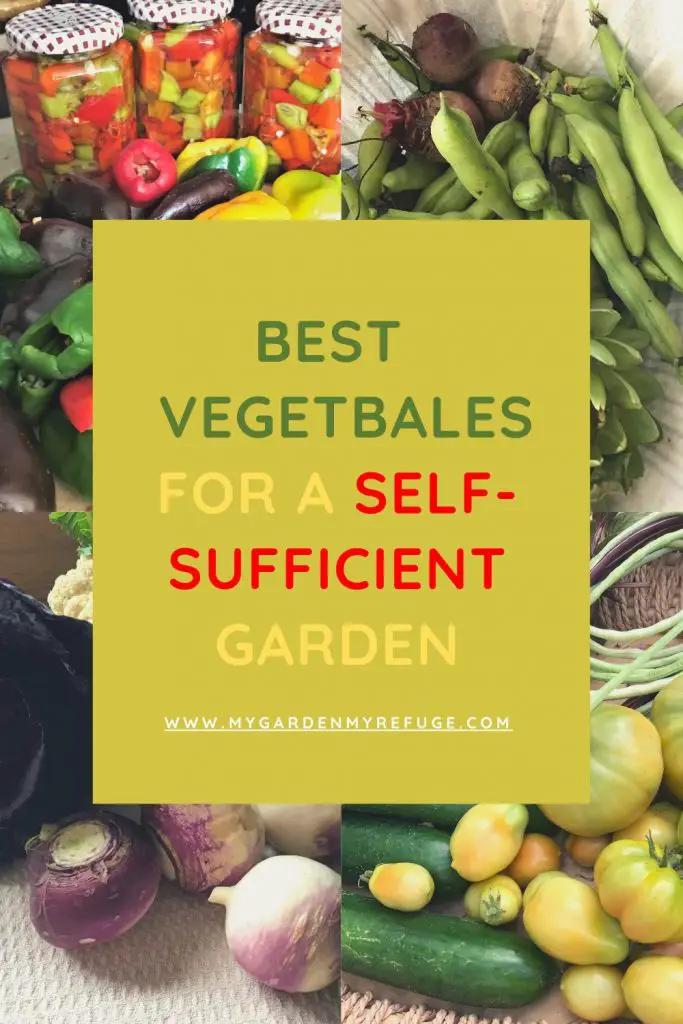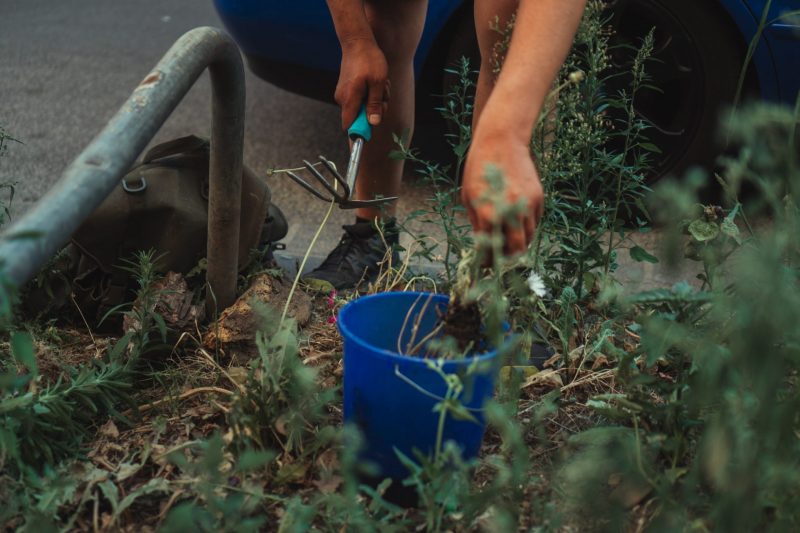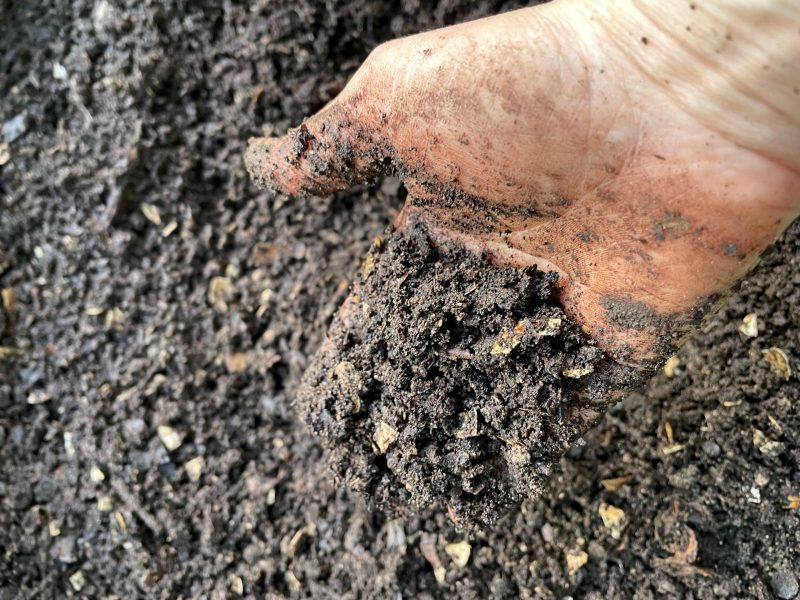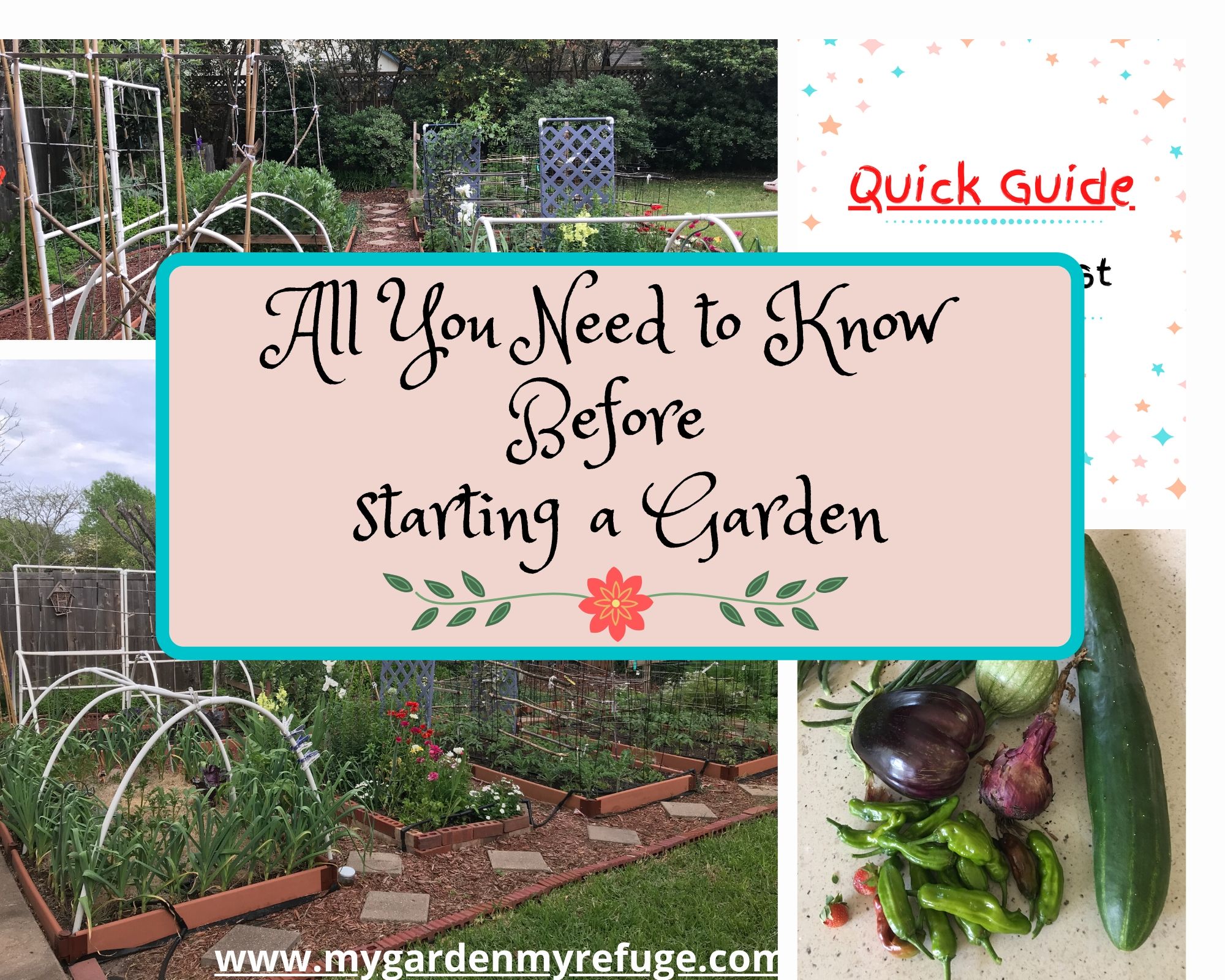What is a self-sufficient garden?
A self-sufficient garden can feed a person or a family year-round. Back in the day, it was known as a victory garden, where families had to grow as much food as possible to sustain themselves during the war. Therefore, choosing the right crops to grow was crucial, as some are better than others to grow for self-sufficiency.
Other factors may also contribute to having a successful experience growing your food. Number one is changing your mindset from a consumer to a producer and switching from seeking abundance to acceptance.
How big should a self-sufficient garden be?
On average, 1/4 to 2 acres is ideal for a self-sufficient garden. However, it depends on what you want to grow and how many people you intend to feed. The suggested number allocates 200 sqft per person.
With that said, 200 sqft is plenty to grow many crops that can feed a family of six if used wisely. It might not reach self-sufficiency at 100%, but it will provide a lot of fresh and healthy food for a given season.
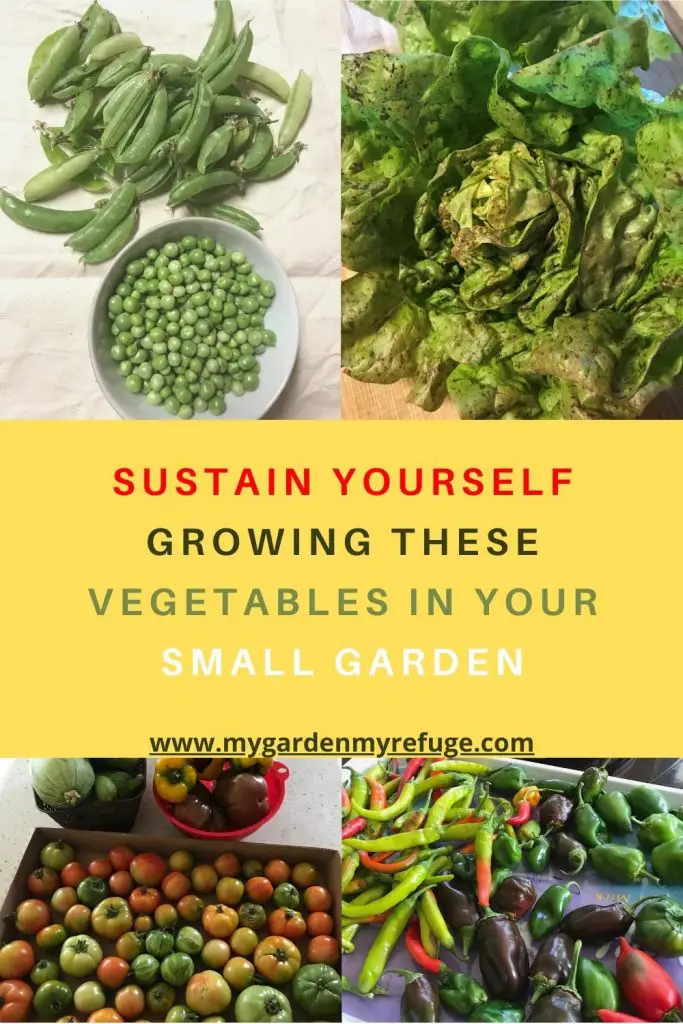
Choose the right crops for a self-sufficient garden
Once you set up the garden, it is time to choose what to grow in it. Most gardeners tend to get carried away when flipping seeds catalog pages, and they just want to get and grow it all. However, it is wiser to make a list of possible crops to grow, and then narrow it down according to the following criteria.
- Love: Start by choosing the crops you enjoy eating. It will keep you motivated when disappointment strikes.
- Nutritious: After all, growing a garden is to get the highest nutrition possible. All vegetables are nutritious, but some are more valuable to grow yourself than others.
- Fast-growing: This is very important to consider. Fast-growing crops will allow you to succession-plant efficiently and get more from the same space.
- Easy to grow: Not all crops are created equal. Some are easy to grow; others are more demanding. When you are trying to feed a family, you should look for crops that won’t require more attention than you can provide.
- Productivity: Choosing productive plants will increase the harvest per square foot.
- Can keep: This one is important if you are thinking beyond self-sustainability. It is for those who think of long-term storage or those who have one growing season.
- Easy to save seeds: Saving your seeds is another step toward self-sufficiency. It also increases the quality of your crops in the long run by becoming better adapted to your garden’s environment.
Check out my other post on how to double your small garden’s harvest to learn how to plan your garden for maximum productivity. Now let’s get to the crops that will make it into the list.
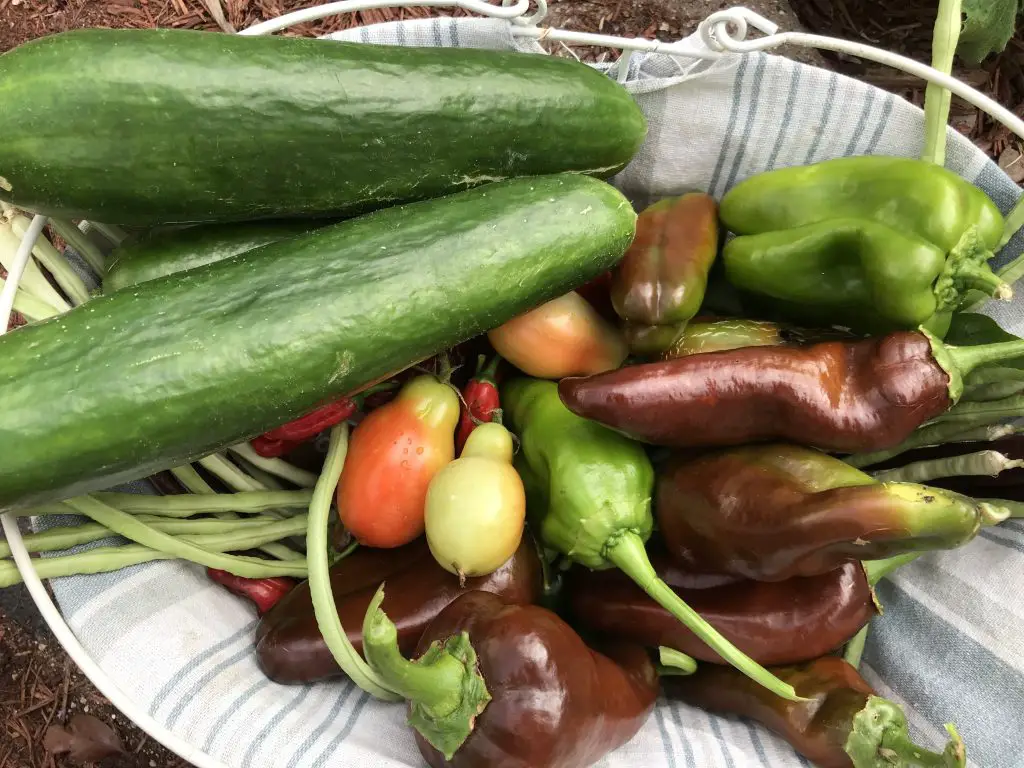
1- Peppers
Peppers are an excellent choice for a self-sustaining garden. One plant produces more than a pound of fruit through the growing season. They are relatively easy to grow once you find the variety that works for your area. Also, there are many ways to keep the overflow of the extra harvest.
2- Tomatoes
Tomatoes are the number one plant grown by home gardeners. They are quick and productive for the space they occupy. The wide range of varieties to choose from ensures a type for every garden. There are also many ways to preserve for the offseason.
3- Chinese Cabbage/ Choi
It might come as a surprise, but if you want a quick cool-season crop to grow, try growing Chinese cabbage. It takes a lot less time to mature than any other brassica and is very easy to grow from seed. It does not require extensive tending except for managing cabbage loopers, which is not that hard.
4- Leafy greens
Leafy greens such as kale, Swiss chard, and collards are cool-season crops that stand out in a self-sustaining garden. They are easy to grow from seed and fast too. Plant them once and harvest all season long. Some gardeners treat them as perennials and keep them in the garden for more than one season.
5- Lettuce
Another leafy green for the cool season, lettuce is a great choice for many reasons. It takes very little space, and if you harvest only the outer leaves instead of the whole head, it feeds all season long.
6- Turnips
Root crops, in general, are slow growers except for turnips. If you start them indoors, you will get a head start on the season, and harvest turnips in less than fifty days. You can also harvest turnip greens while waiting for the bulb to size up.
7- Beets
After turnips, beets are another root crop worth growing in the home garden. They, too, are great to start indoors to shorten the wait for the harvest. Beet tops also are edible and can be a substitute for spinach.
8- Pole Green beans
Green beans are warm-season crops that you should never skip. Choosing pole beans over bush beans is not only a space saver, but it is also a production overload. Do some research to find the right variety for your region as insurance.
9- Fava beans
Also known as Horse beans or broad beans. They are the forgotten cool-season legumes, despite being highly productive with minimum care. Also, their nutritional value puts them on the superfood list.
10- Vining Peas
Peas are the candy of the garden next to cherry tomatoes. Choosing a suitable variety for your region is crucial to preventing common diseases and pests.
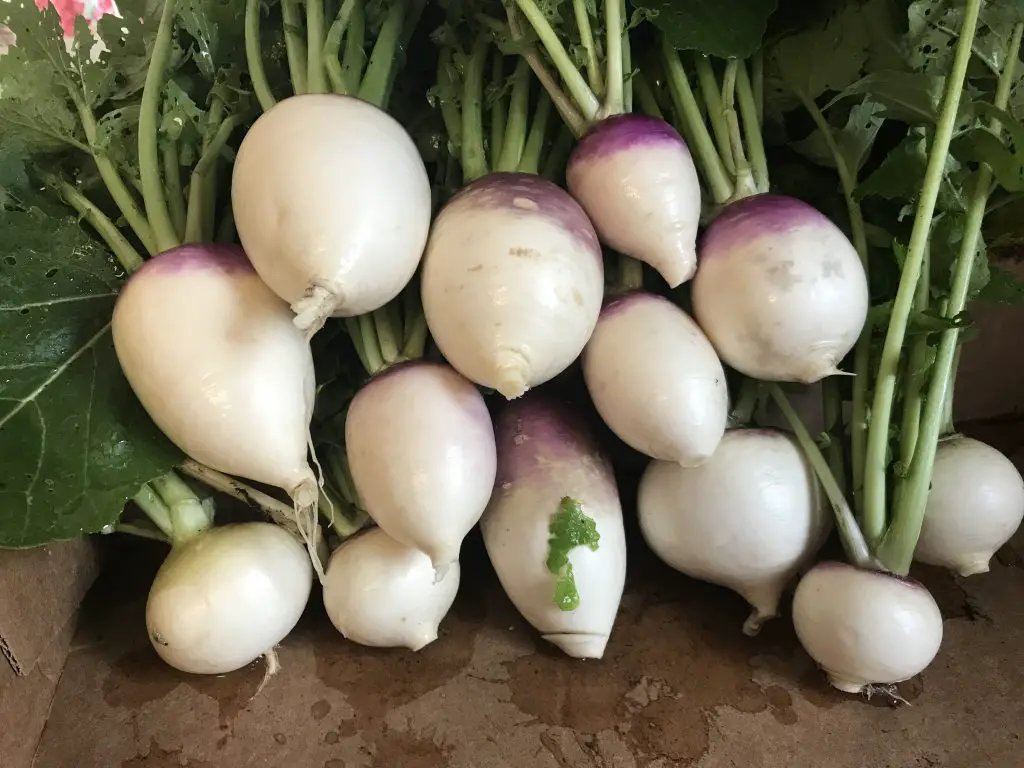
11- Winter Squash/ Pumpkin
Winter squash and pumpkins are great starchy vegetables to keep for winter when most crops are leafy greens. They keep for a long time under the right conditions.
12- Alliums
It includes onions (dry and green), garlic, and leeks. Despite their long growing time, they don’t cause any inconvenience since they take up very little space in the garden.
13- Cucumbers
Cucumbers are a must in a summer garden. There is an array of varieties you can choose from, and luckily they are all easy to grow. One important tip is to plant them in intervals to extend the harvest.
14- Herbs
Herbs are easy to grow. They do fall into two categories, perennials, and annuals. Most perennial herbs make an excellent addition to the ornamental garden. Lavender, Mexican mint marigold, rosemary, thyme, and oregano are evergreens and add interest with their foliage and blooms. They adapt to their environment nicely without any extra attention. Chives, dill, parsley, and cilantro grow fast and easy in the cool season, while basil, stevia, lemon balm, and bee balm thrive in the summer.
15- Cardoons
Cardoons are cousins to Artichokes and are perennial plants that grow during the cool season and go dormant in the summer. They are carefree and do not even require a dedicated garden bed. Treat them as ornamental plants and add them to the surrounding landscape. Harvest the stalks through the growing time. As a bonus, cartoons and artichokes come back in doubles. Making it easy to propagate by separating the pup ( baby plants) from the mother root.
Conclusion
Nowadays, growing a self-sufficient garden is equivalent to having a victory garden during the war. The only difference is that today you don’t have to own 2000 sqft of garden space. There are new ways to grow a lot of food in a small space, using square-foot gardening and high-density planting techniques.
If you wonder about potatoes, carrots, and other common vegetables I have not mentioned above, check my post on the least efficient vegetables to grow in a small garden.
